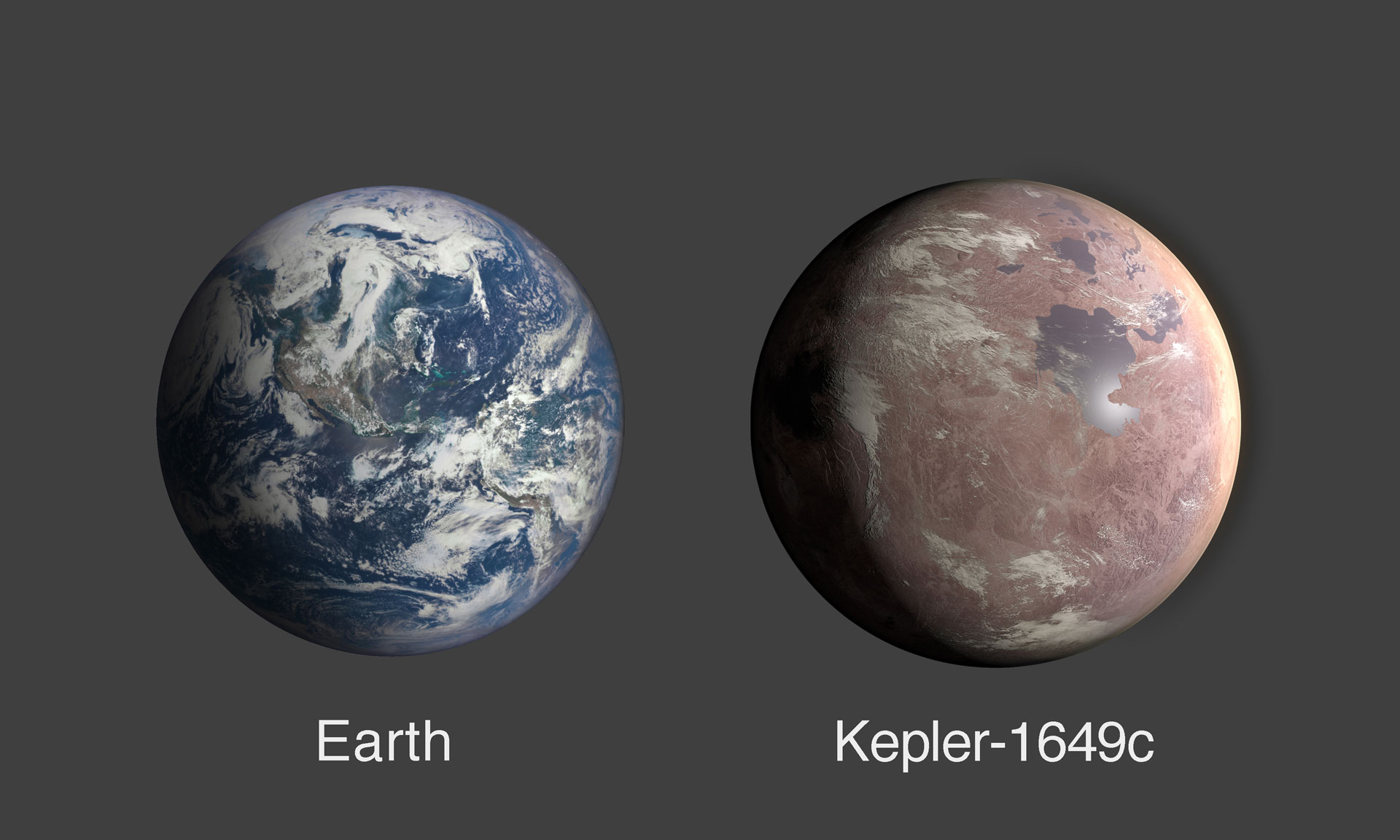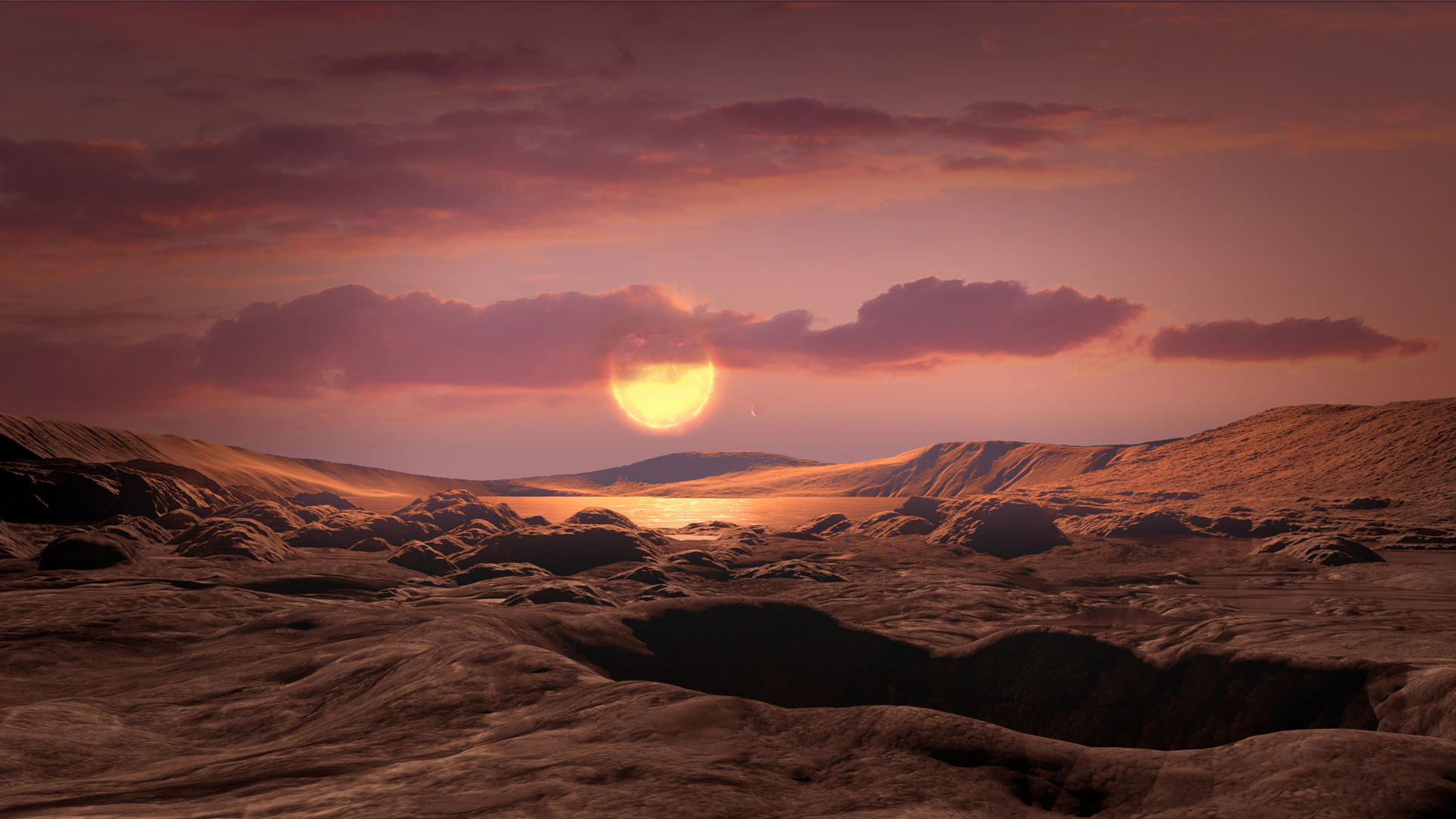April15, 2020, Mountain View, CA -- In a new paper published in the Astrophysical Journal Letters, co-authored by SETI Institute scientist Jeff Coughlin, astronomers using Kepler data have identified a planet nearly the same size of Earth that orbits in its star’s habitable zone, where liquid water could exist on its surface. This new world, Kepler-1649c, is 300 light-years away and orbits a star that is about one-fourth the size of our Sun. Only 6% bigger than the Earth, it shares its sun with a planet much like Venus, Kepler-1649b, which was discovered three years ago (https://www.seti.org/press-release/possible-venus-twin-discovered-around-dim-star). Although NASA’s Kepler space telescope was retired in 2018 when it ran out of fuel, scientists are still making discoveries as they continue to examine the signals Kepler detected.
The primary goal of the Kepler/K2 mission, which was managed out of NASA’s Ames Research Center in California’s Silicon Valley, was to figure out what fraction of stars in the Milky Way galaxy have Earth-size planets in their habitable zone — a key step to figuring out how common life may be in the cosmos. With a vast quantity of data from observing nearly 200,000 stars for four years, as part of Kepler’s primary mission, the entire planet-finding process has to be automated to compute accurate statistics. Kepler used the transit method to detect exoplanets, and there are two stages to this process: the first is to detect signals that show a periodic drop in brightness, as expected when an exoplanet passes in front of its star each orbit. As other non-planet sources can cause similar signals, the second stage is to classify each as either due to a planet or due to other phenomena.

A comparison of Earth and Kepler-1649c, an exoplanet only 1.06 times Earth's radius. Credit: NASA/Ames Research Center/Daniel Rutter
Coughlin has been examining these signals for the better part of a decade and was a key part of the Kepler team that automated the classification stage. “There are an incredibly large number of signals in the initial detection stage that aren’t due to planets, such as those due to variable stars and spurious noise from Kepler’s electronics,” Coughlin said. “It took us years of studying these signals in-depth to gain the human expertise to distinguish them reliably, and then years more to write the computer algorithms to do it automatically.”
Many of these signals, not due to planets, or “False Positives,” are still scientifically exciting objects to study, and the automated process is not 100% perfect. Hence, a dedicated team of scientists formed the Kepler False Positive Working Group to manually review them — it took the team years to review each of the thousands of signals from the final Kepler planet search, which was publicly released three years ago (https://www.nasa.gov/press-release/nasa-releases-kepler-survey-catalog-with-hundreds-of-new-planet-candidates). In this last review, the team came across the signal from Kepler-1649c, which was detected in the first stage, but had just barely been misclassified by the automated algorithms in the second stage — the humans quickly recognized it as an extraordinary discovery.
Coughlin noted, “In terms of size and likely temperature, this is the most similar planet to Earth that has ever been found with Kepler. It’s incredible to me that we just found it now, seven years after data collection stopped on the original Kepler field. I can’t wait to see what else might be found in the rich dataset from Kepler over the next seven years, or even seventy.”

An artist's concept of what Kepler-1649c could look like from its surface. Credit: NASA/Ames Research Center/Daniel Rutter
Lead author Andrew Vanderburg, a NASA Sagan Postdoctoral Fellow at the University of Texas at Austin, said, "The more data we get, the more signs we see pointing to the notion that potentially habitable and Earth-sized exoplanets are common around these kinds of stars. With red dwarf stars almost everywhere around our galaxy, and these small, potentially habitable and rocky planets around them too, the chance one of them isn't too different than our Earth looks a bit brighter." While more Earth-like planets may yet be discovered around red dwarf stars, it’s also true that they can be prone to flare-ups which could be problematic for the existence of life.
NASA press release: https://www.nasa.gov/press-release/earth-size-habitable-zone-planet-found-hidden-in-early-nasa-kepler-data
Astronomical Journal Link: https://iopscience.iop.org/article/10.3847/2041-8213/ab84e5
Read Again https://www.seti.org/dedicated-team-scientists-discover-habitable-zone-earth-size-planet-kepler-dataBagikan Berita Ini















0 Response to "Dedicated Team of Scientists Discover Habitable-Zone Earth-Size Planet in Kepler Data - SETI Institute"
Post a Comment